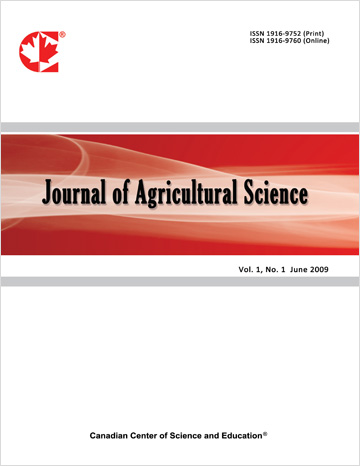Evaluating Salt Tolerance of 14 Barley Accessions from Southern Tunisia Using Multiple Parameters
- Abdennaceur Ben khaled
- Taoufik Hayek
- Elhem Mansour
- Hédia Hannachi
- Belgacem Lachiheb
- Ali Ferchichi
Abstract
Barley “Ardhaoui” (Hordeum vulgare L.) is a local landraces cropped in southern Tunisia characterized by its resistance to drought and salinity. Salt tolerance of barley changes according to the growth stages. In order to study the salinity tolerance of (Hordeum vulgare L.), fourteen barely accessions, were grown in soil and exposed to four salinity levels (5, 7, 13 and 20 dS/m).
To evaluate its salt tolerance using multiple parameters, fourteen barley accessions from two regions in the southern Tunisia (costal and mountainous regions) were grown in soil and exposed to four salinity levels (5, 7, 13 and 20 dS/m). Plant growth parameter, total biomass at final harvest, straw yield and yield compound associated with salt tolerance during the different growth stages were determined. The results showed negative effects of salinity on the growth and the development of the barley. However, the salt sensitive accessions showed a greater reduction in tiller number (e.g. by about 80 %) than tolerant ones (e.g. by about 57 %) at 20 dS/m. These decrease on the growth of leaves, tillers and the aerial part constitute a strategy developed by the barely in vegetative phase to reduce the salt stress. Tiller and spikelet numbers were more affected by the salinity at 13 and 20 dS/m the different results showed significant correlation between the spikes numbers and the tiller number (r = 0.872). The salinity affected negatively these two parameters, which both initiate during early growth stages. So, the salinity has a greater influence on final grain yield than on yield components in the later stages. The studied parameters showed significant differences (p<0.05) between the barely accessions.
The cluster analysis using agronomic parameters at all growth stage showed that the accessions “Ettalah” and “Elhezma” were ranked as the most tolerant to salinity. However, “Boughrara” and “Edwiret Elgdima” accessions were ranked as moderate and presented a change of their degree of tolerance with the different growth stage. The remaining accessions showed the lowest tolerance to salinity. A highest tolerance was observed on the accessions from plain zones compared at those of mountainous zones.
The response differences between accessions of local population of barley “Ardhaoui” reflecting an important internal genetic variability against the salinity. This variability could be more explored and used for the barley breeding program.- Full Text:
 PDF
PDF
- DOI:10.5539/jas.v4n12p27
Journal Metrics
- h-index: 67
- i10-index: 839
- WJCI (2023): 0.884
- WJCI Impact Factor (2023): 0.196
Index
- AGRICOLA
- AGRIS
- BASE (Bielefeld Academic Search Engine)
- Berkeley Library
- CAB Abstracts
- ChronosHub
- CiteSeerx
- CNKI Scholar
- Copyright Clearance Center
- CrossRef
- DESY Publication Database
- DTU Library
- e-Library
- EBSCOhost
- EconPapers
- Elektronische Zeitschriftenbibliothek (EZB)
- EuroPub Database
- Excellence in Research for Australia (ERA)
- Google Scholar
- Harvard Library
- IDEAS
- iDiscover
- Jisc Library Hub Discover
- JournalTOCs
- KindCongress
- LIVIVO (ZB MED)
- LOCKSS
- Max Planck Institutes
- Mendeley
- MIAR
- Mir@bel
- NLM Catalog PubMed
- Norwegian Centre for Research Data (NSD)
- Open J-Gate
- OUCI
- PKP Open Archives Harvester
- Polska Bibliografia Naukowa
- Qualis/CAPES
- RefSeek
- RePEc
- ROAD
- ScienceOpen
- Scilit
- SCiNiTO
- Semantic Scholar
- SHERPA/RoMEO
- Southwest-German Union Catalogue
- Standard Periodical Directory
- Stanford Libraries
- SUDOC
- Swisscovery
- Technische Informationsbibliothek (TIB)
- Trove
- UCR Library
- Ulrich's
- UniCat
- Universe Digital Library
- WorldCat
- WRLC Catalog
- Zeitschriften Daten Bank (ZDB)
Contact
- Anne BrownEditorial Assistant
- jas@ccsenet.org
